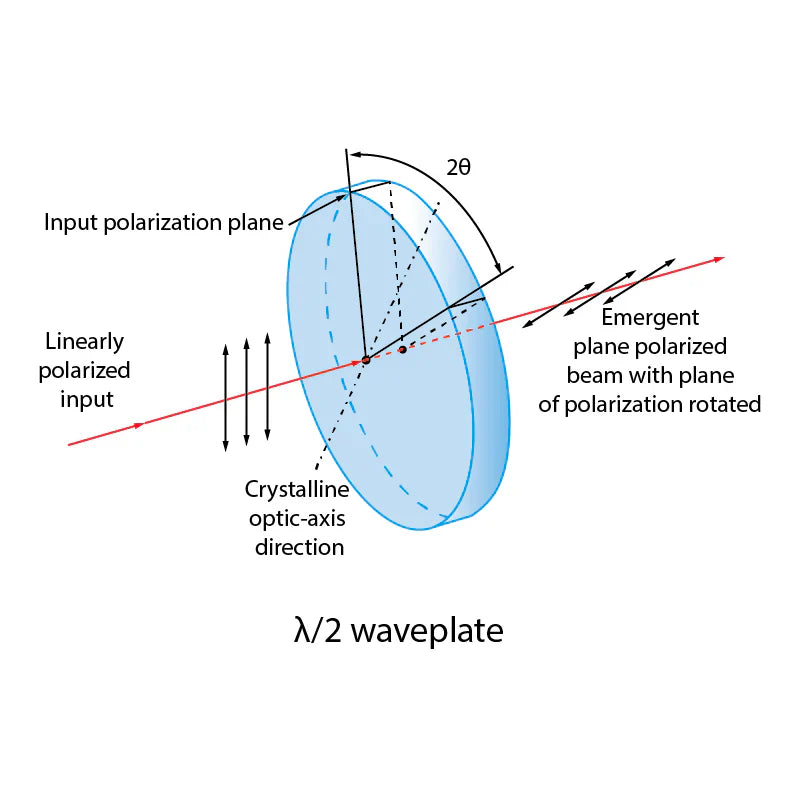12.7×1mm,774&1547nm,1/2λ,dual wavelength,waveplate(HWPZ)
12.7×1mm,774&1547nm,1/2λ,dual wavelength,waveplate(HWPZ)
Couldn't load pickup availability
Shipping & Leadtime
Shipping & Leadtime
For stocked products, shipment will usually be made within 5 working days after order.
For customized products, shipment will usually be made within 4-8 weeks after order.
Mounting
Mounting
Mounting Ring is available for . The ring will be slightly bigger than the filter itself.
For example a dia25mm ring can hold waveplate from dia22mm to dia24.5mm.
Email us for detail mounting options.
Return
Return
You will have a 14 days window for requesting return after you received the item.
*There will be a flat rate of $35 for return processing.
Payment Option
Payment Option
We accept payment with below method
- Google Pay
- Apple Pay
- Visa
- Master
- JCB
- American Express
For organization purchase under $100. The order is eligible for Afterpay. (payment within 15 days after received)
- Purchase Order is required from your organization
For purchase amount above $100. You need to make payment in advance or request for a flexible payment terms.
Different Construction of Waveplates
-

Single Plate
Construction: Made from a single piece of birefringent material, such as quartz or mica.
Features:
- Simple design with a defined thickness that determines the phase shift (e.g., quarter-wave or half-wave).
- Commonly used in applications where precise control over polarization is required.
- Limited in terms of thermal stability and wavelength range compared to more complex designs
-

Cemented
Construction: Two birefringent plates bonded together using optical cement.
Features:
- Provides greater durability compared to air-spaced designs, suitable for rugged environments.
- Typically operates within a temperature range of -30°C to +80°C.
- However, this construction can lead to degradation in beam deviation and wavefront quality due to the presence of the cement layer
-

Air Spaced
Construction: Composed of two birefringent plates separated by an air gap.
Features:
- High laser damage threshold and excellent performance across a wide temperature range.
- Maintains optimal beam deviation and transmitted wavefront quality.
- More expensive due to the need for coatings on both surfaces to minimize reflective losses
-

Optical Contact
more about optical contactConstruction: Two polished surfaces are brought into contact without any adhesive, relying on Van der Waals forces for bonding.
Features:
- Excellent preservation of beam deviation and transmitted wavefront quality.
- Sensitive to temperature changes; large units may require careful handling to prevent separation due to thermal stress.
- Ideal for high-performance applications where maintaining optical integrity is critical






